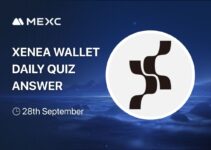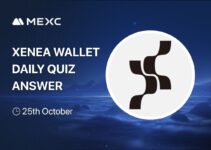Market context: extreme fear and the opportunity window in 2025
As volatility returned to cryptocurrency markets in 2025, sentiment indicators briefly entered “extreme fear” territory. Historically, such readings have coincided with attractive entry points for risk-tolerant investors — provided they pair conviction with disciplined risk management.

This article examines three altcoins drawing attention from traders and investors: Solana (SOL), Stellar (XLM), and Digitap (TAP). We outline the main technical and fundamental drivers for each project, highlight 2025-specific catalysts, and suggest practical positioning ideas for those seeking exposure while managing downside risk.
How to think about positioning during high fear
When sentiment is severely negative, try to:
- Separate short-term volatility from longer-term trends.
- Assess each project’s fundamentals and recent on-chain activity.
- Use scaled entries (dollar-cost averaging) rather than all-in trades.
- Define stop-loss levels and allocation limits to protect capital.
Solana (SOL): rebuilding momentum
Solana is a high-throughput Layer 1 blockchain known for low transaction costs and an active developer ecosystem. After periods of network stress and market sell-offs, SOL has often shown sharp rebounds when confidence returns.
Key 2025 catalysts
- Network upgrades: Continued performance and stability enhancements can restore developer and user confidence.
- DeFi and NFT activity: Renewed on-chain demand from decentralized applications and marketplace activity can lift fee-based revenue and token utility.
- Institutional attention: Broader institutional adoption of crypto infrastructure in 2025 has translated into more interest in scalable chains with real-world throughput.
On-chain and technical signals to watch
- Active addresses and transaction volume: Rising counts suggest improved organic demand.
- Validator and staking metrics: Growth in delegated stake can signal longer-term confidence.
- Technical levels: Monitor recent swing highs and moving-average structure for signs of trend change.
Analysts in 2025 have pointed to potential upside scenarios for SOL if network upgrades and demand metrics continue to improve. However, Solana remains a higher-volatility asset that can underperform during broad-market risk-off episodes.
Stellar (XLM): payments and cross-border rails
Stellar is designed for fast, low-cost cross-border payments and tokenized asset issuance. Its focus on interoperability between fiat and digital assets positions it as a contender for payment rails and remittance flows.
Fundamental strengths
- Payments orientation: Stellar’s consensus and transaction model is optimized for low fees and speed.
- Partnership appeal: Projects aiming to tokenize assets or integrate with legacy systems often evaluate Stellar for payment-focused use cases.
- Supply and distribution: Observers track inflation controls and distribution mechanisms that affect circulating supply dynamics.
What could drive XLM in 2025?
- Real-world pilots: Adoption in remittance corridors, stablecoin issuance, or cross-border payments can provide tangible demand.
- Regulatory clarity: Clearer frameworks for tokenized assets and payment rails make institutional partnerships more feasible.
- Macro rotation: In a risk-on environment, payment-focused chains can benefit from renewed transaction activity.
Stellar historically has experienced large drawdowns from peak levels, which creates potential upside from lower bases — but market timing is uncertain. Keep position sizing conservative and focus on measurable adoption signals.
Digitap (TAP): PayFi, bridging DeFi and TradFi
Digitap positions itself at the intersection of decentralized finance and traditional payments, sometimes described as “PayFi” — a hybrid model that seeks to let users hold, convert, and spend fiat and crypto seamlessly.
Project characteristics
- Unified balance model: The concept centers on a single user balance denominated across multiple assets for everyday spending.
- Payment infrastructure: Integrations such as payment cards and merchant acceptance are core to mainstream utility.
- Early-stage dynamics: As a lower-capitalization project, TAP carries materially higher idiosyncratic risk but may offer greater asymmetric upside if execution succeeds.
Catalysts and risks in 2025
- Merchant adoption and card issuance progress will be a critical adoption metric.
- Regulatory scrutiny around payment products integrating crypto remains a key risk; compliance and licensing matter.
- Liquidity and exchange listings: Broader secondary-market liquidity can reduce volatility and improve price discovery.
For speculative investors, early-stage payment-focused tokens can be attractive for potential upside — but they should be balanced against capital preservation. Verify concrete product rollouts and regulatory approaches before increasing exposure.
Comparing the three opportunities
Each project presents a distinct risk-return profile:
- SOL: Higher market cap, strong developer ecosystem, and technically oriented scaling narrative. Medium-to-high volatility with broad market sensitivity.
- XLM: Payments-focused, potential for real-world use cases. Medium market cap and steady utility orientation but adoption-dependent.
- TAP: Early-stage PayFi token with execution risk and potential for outsized gains if product-market fit and regulatory compliance are achieved.
Allocations should reflect these differences. A diversified allocation favors more weight to established protocols while allowing a smaller allocation to speculative, higher-upside projects.
Positioning strategies for the next rally
Below are practical approaches to build exposure while managing risk in a stressed market environment.
1. Dollar-cost averaging (DCA)
- Buy small, regular increments rather than attempting to time the absolute low.
- DCA reduces execution risk and smooths the entry price during choppy markets.
2. Use conviction sizing
- Allocate larger position sizes to assets with higher conviction and better-established fundamentals (e.g., Solana), smaller sizes to speculative projects (e.g., TAP).
- Cap any single altcoin exposure to a defined percentage of the crypto allocation.
3. Combine spot and options/futures (for experienced traders)
- Spot exposure builds long-term ownership; options and futures can be used to hedge or amplify short-term views.
- Maintain prudent leverage levels; avoid concentrated leveraged bets during extreme fear regimes.
4. Monitor adoption and on-chain metrics
- Track active addresses, transaction fees, stablecoin flows, and merchant integrations as proxies for real demand.
- For payment-focused projects, prioritize proof of merchant adoption and card issuance progress.
Risk management checklist
- Set explicit stop-loss and take-profit rules before entering trades.
- Rebalance periodically to lock gains and limit concentration risk.
- Use wallets and custodial solutions aligned with your security and accessibility needs.
- Stay informed on regulatory developments that could materially affect payment and tokenized-asset projects.
Macro and market themes shaping the rest of 2025
Several broader trends in 2025 are influencing altcoin prospects:
- Institutional infrastructure buildup: Custody, compliant settlement solutions, and tokenized products continue to expand, improving market depth.
- Regulatory clarity: Jurisdictions that provide clearer frameworks for payments and asset tokenization are catalyzing partnerships.
- Real-world asset tokenization: Growth in tokenized securities, invoices, and receivables can boost chains with strong payment rails.
- Macro liquidity cycles: Risk-on rallies tend to lift altcoins broadly, while tightening episodes often compress speculative valuations.
How to research before you trade
Due diligence is essential. Consider these steps before allocating capital:
- Read the project whitepaper and recent development updates.
- Evaluate team track record, advisor credibility, and audit status.
- Check liquidity on exchanges and historical volatility metrics.
- Follow on-chain metrics and developer activity to confirm sustained engagement.
Summary: measured exposure during the next bounce
Periods of extreme fear can present compelling entry points, but they also require discipline. Solana offers exposure to a growth-focused Layer 1 with developer momentum; Stellar appeals to payment and remittance use cases; Digitap represents an early-stage PayFi play with higher execution risk and potential upside.
Balance conviction with risk management: use DCA, cap allocations to speculative tokens, and prioritize projects demonstrating tangible adoption. Continual monitoring of on-chain metrics, product rollouts, and regulatory developments will help refine decisions as the market evolves through 2025.
For traders and investors seeking execution, consider platforms that provide market access, liquidity, and research tools to support informed decision-making. Always conduct your own research and consult a financial advisor if unsure about investment suitability.
Disclaimer: This post is a compilation of publicly available information.
MEXC does not verify or guarantee the accuracy of third-party content.
Readers should conduct their own research before making any investment or participation decisions.
Join MEXC and Get up to $10,000 Bonus!
Sign Up


